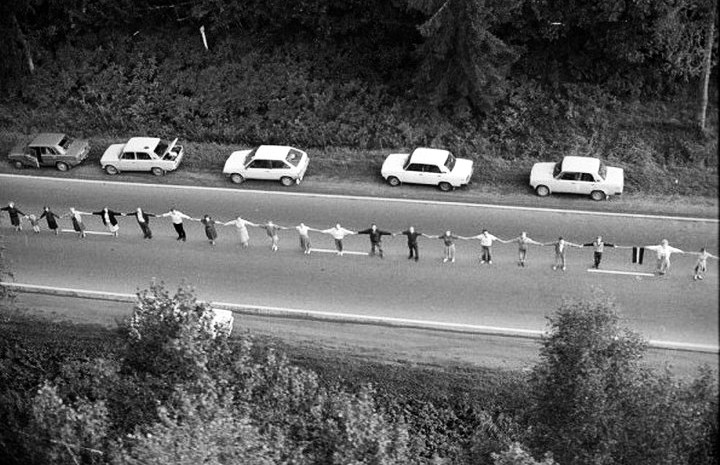Now, in the digital age people are being invited to participate in a "virtual human chain" to mark the events of a quarter-century ago.
The idea is the brainchild of the Latvian National Commission (LNC) for UNESCO and the State Chancellery and will "show once again that the people of the three Baltic countries can get together and be united in a common goal," say organisers.
There are two ways individuals can join the virtual Baltic Way. One is to share your Baltic Way experience at www.thebalticway.eu and mark the spot where you stood. Those who did not actually take part in the Baltic Way will have the option mark the place where they believe they would stand today.
Another project titled “Stories of the Baltic Way”, collects people's memories of the Baltic Way and their participation in it.
“The aim of the project is to actively involve our society and raise understanding of the events surrounding the Baltic Way, collect people's memories and recollections and make them available for future generations both virtually and in museums,” Baiba Moļņika of UNESCO said in an outline of the project.
All the submitted stories will be collected, passed on to museum collections and published online.
The 25 most memorable stories in Latvia, Lithuania and Estonia will be collected in a publication marking the 25th anniversary of the Baltic Way, which will be freely available online.
This year marks the 25th anniversary of the Baltic Way: a unique and peaceful mass demonstration which saw more than a million people join hands to create a 600 km long human chain through the three Baltic States, uniting Estonia, Latvia and Lithuania as they strove for freedom.
The Baltic Way was included in the UNESCO international register Memory of the World on the 30th of July, 2009.
























